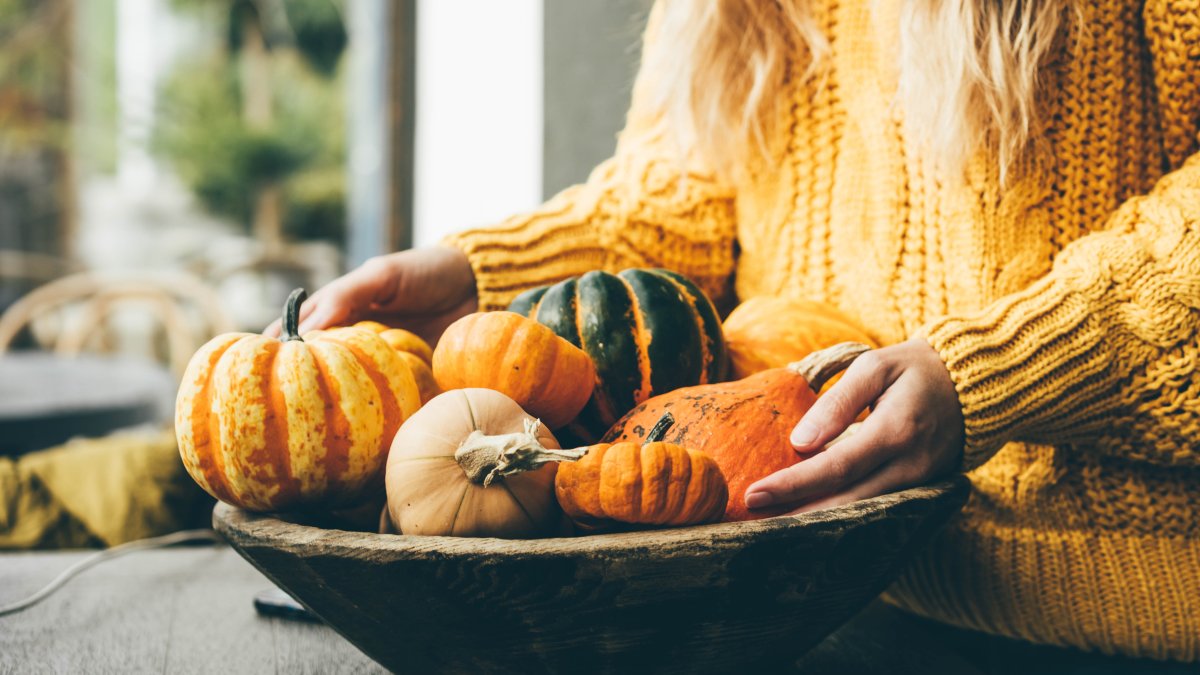You might want to think twice about the fall decor you bring into your home.
According to the allergist and immunologist who heads Loyola Medicine’s pollen count in Chicago, Dr. Rachna Shah, levels of mold are the highest they’ve been since 2014 in the area.
“Some of the stuff that we use to decorate – like pumpkins and corn stalks or other things of that nature – can be teaming with mold,” Shah told NBC Chicago. “So keeping those decorations outside rather than indoors can also be helpful in keeping that mold outside instead of bringing it into our homes.”
According to Shah, recent rain and warmer temps combined with the start of decaying leaves and other materials have led to the elevated mold counts in the area, particularly a type of mold called cladosporium.
Tuesday’s pollen count showed record-high levels of mold, according to the Loyola Medicine Allergy Count.
Loyola Medicine Allergy Count for 9-23-2025
Trees – Absent
Grass – Absent
Ragweed – Low
Weeds – Moderate
Mold – Very High (record)— Loyola Medicine Allergy Count (@LoyolaAllergy) September 23, 2025
Shah said sample slides taken were “almost completely covered.”
The high levels of mold follow an already troubling start to the fall allergy season after ragweed levels rose earlier than expected and reached sustained higher totals.
“The ragweed season is generally mid-August until the end of September,” Shah told NBC Chicago. “This year, we started ragweed season a little early, so in early August it started.”
In fact, the levels were higher than Shah has seen in years.
So what will this mean for you and your symptoms?
Beyond the usual itchy eyes, itchy nose, sneezing and runny nose, seasonal allergies can lead to some unexpected conditions and possibly even more serious infections or colds.
Some of the conditions that many may not realize are associated with seasonal allergies are skin rashes and something known as “oral allergy syndrome,” which causes some sufferers to experience reactions to certain fruits and vegetables.
As for the best forms of prevention, Shah suggests avoidance measures to prevent allergies from entering your home, including keeping windows closed, especially when sleeping, and rinsing off or changing clothes are coming in from outside.
“This is the time of year when we start tidying up yards and other things, and removing leaves from our front yard,” Shah said. “And those leaves, because they are decaying material, because we’re working with soil and other things like that, that have a whole lot more mold and other particles and other things like that, wearing a mask during those kind of activities can be very helpful.”
For those with particularly bad symptoms, over-the-counter medications can help bring relief.
“There’s antihistamines like Allegra, Zyrtec, Claritin. All of these are really great in helping with itchy symptoms,” Shah said. “So if you have itchy eyes or sneezing or other things like that. It also helps with drippy symptoms, so watery eyes, runny nose … it’ll really help kind of combat those type of symptoms.”
Shah suggested allergy eyedrops for those with particularly itchy eyes. Nasal sprays can also help to combat congestion, increased mucous or inflammation.
“But that takes at least a week to kick in, so you have to be a little patient with it,” she noted.
Beyond that, Shah said those who can’t seem to find relief should seek care from an allergist.
